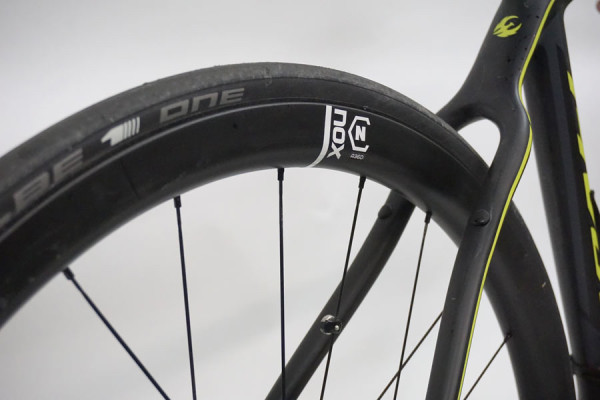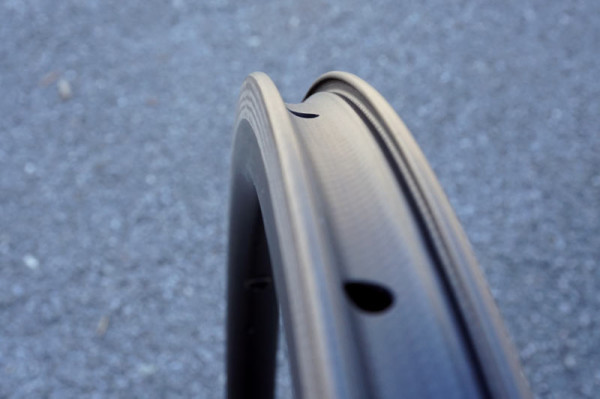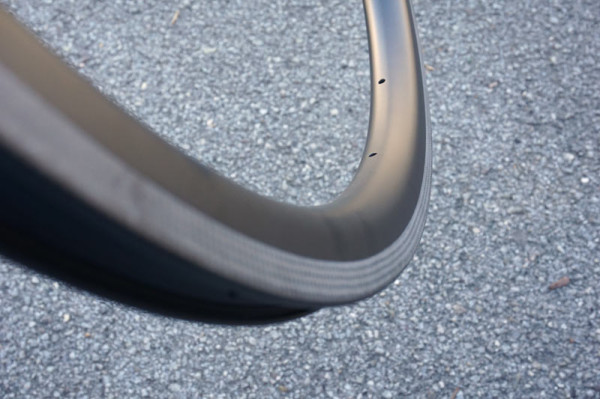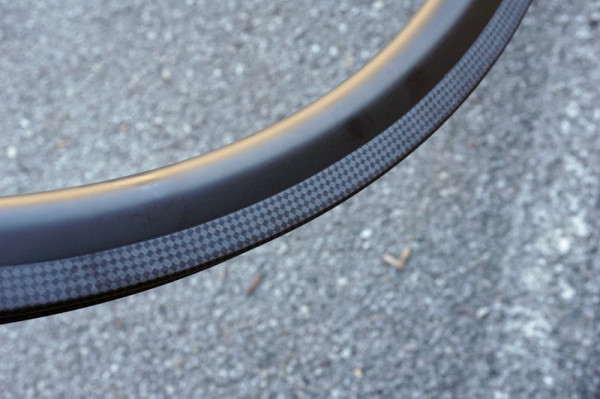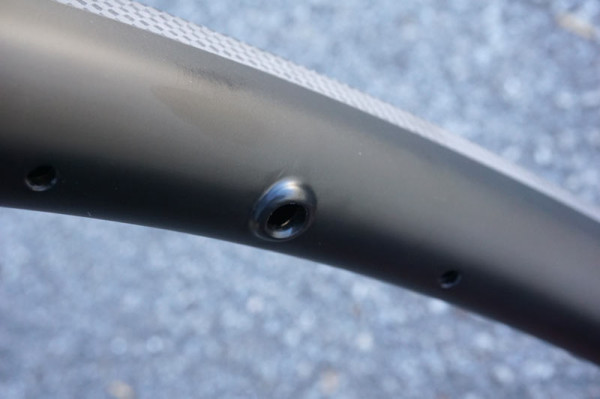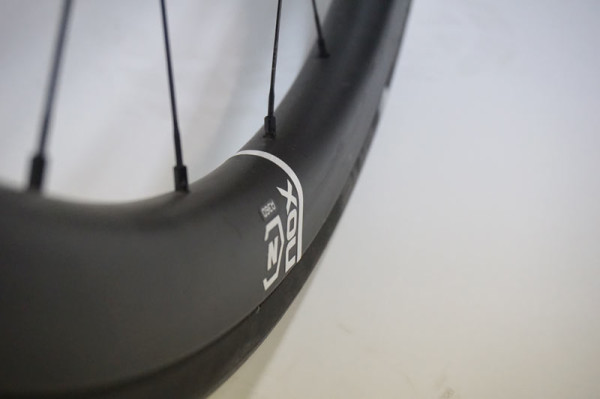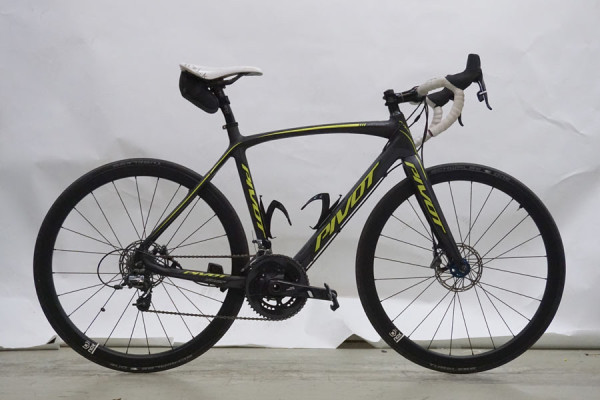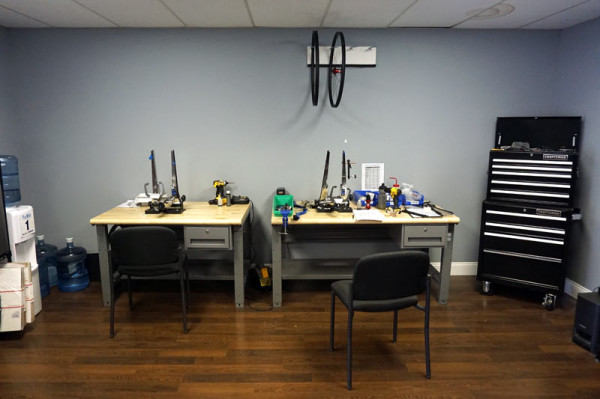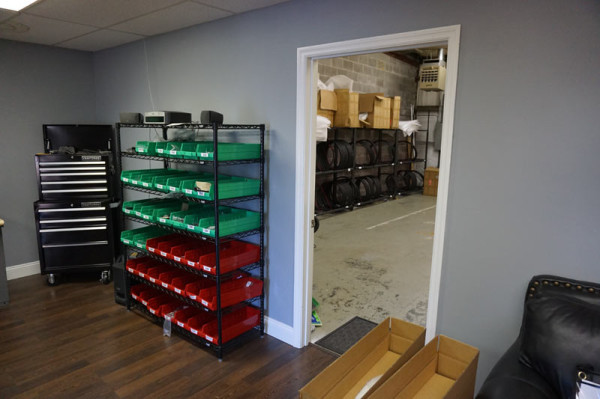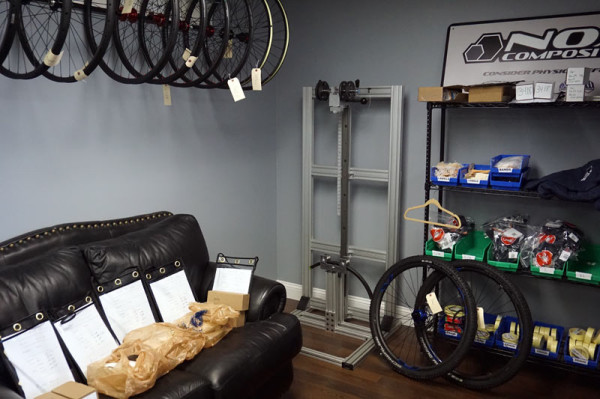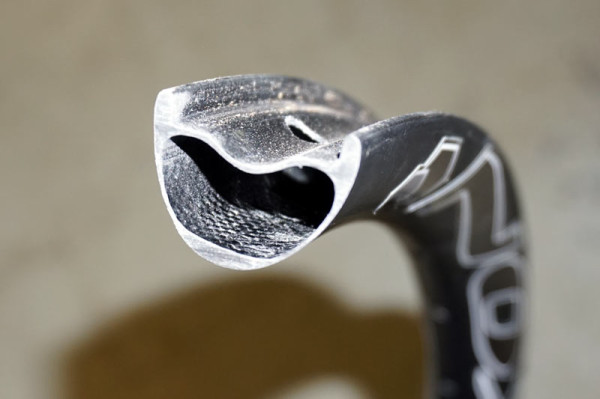Nox Composites is developing full carbon road rims that will come in both symmetric and asymmetric profiles. The design is mostly intended for cyclocross, but looked darn fine on the Pivot Vault set up with Schwalbe One slicks at their office. Both versions use a somewhat aero shape, with a 36mm depth that gets very flat along a broad section of the sidewall. Width is 20mm internal, about 28mm external. The asymmetric version will be used for disc brake wheel builds and rear wheel builds on rim brake wheels. Front rim brake rims will be symmetrical. What separates them from many other carbon rims on the market is the fully molded bead hooks… 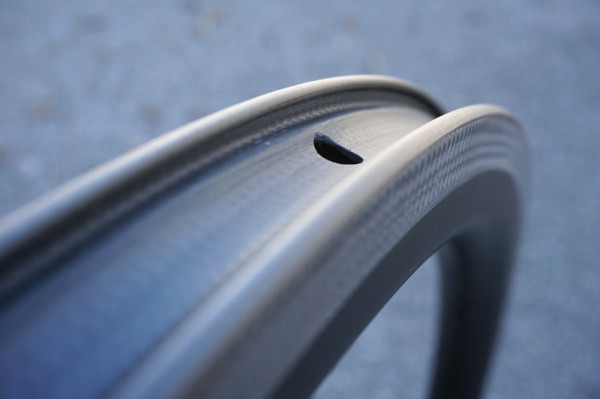
Where many carbon rims are molded with thicker than necessary walls and then have the bead hook machined into existence, Nox’s new rims use a molded design. The benefit is better structural integrity and more control over the finished product.
Their original mountain bike rims also used a molded bead hook before they moved to a hookless design, but it was manufactured in two sections, creating potential weak points. While their warranty rate was very low with those rims, co-founder Brad Stinson says most of the failures were at the seam where the molded sidewall met the rest of the rim. So, for these, they found a new manufacturing partner that had better capabilities. The UD carbon used to create the bead hook and sidewall runs all the way around the exterior of the rim, from inside and under the bead hook on one side to inside and under the other.
The shape is very much a “U”, which tall, flat sidewalls that should drop cyclocross mud and muck fairly easily.
The rim brake models are being tested for brake track heat management and will come a little later. They’re testing a basalt material in the surface, which may or may not continue through to production. The disc brake versions will be ready by May 5th and won’t have this woven brake track surface.
These new rims also introduce molded-in valve platforms. Currently, their mountain bike rims (which are also asymmetric) have a 3D printed platform that’s glued on but can, on occasion, fall off or crack. It’s likely the molded design will make its way to all of their rims eventually.
Weight will be right around 430 grams. Stinson told us “Everyone expects the road rims to be lighter than mountain bike rims, but the higher pressures require a thicker sidewall and rim bed, so weights end up being a little heavier.” No doubt the taller profile also adds a bit of weight. For comparison, their Skyline XC rims come in around 340g. The rims are put through a 300psi inflation. The mountain bike rims only need to pass a 100-120 psi test. Both pass a 300kg spoke pull through test.
The rims turn Pivot’s Vault CX bike into a passable road going machine.
The graphics will likely change for production rims, but the line gives a good visual of the curve.
Nox’s office and workshop are quite humble. In the front room is a single desk with 3D printer for prototyping and creating the valve hole washers. Behind that is a two-table wheel building station…
…and parts bins. Through the next door is a large storage space that will soon house a second rack. Stinson says sales are brisk and rims don’t generally spend much time in their Knoxville office.
The other side of the room has a staging area for complete wheels, more parts and a test jig. Most of their testing is done at their manufacturing partner’s facility, but they do smash the occasional rim and all test samples in various ways to prove their strength.
Stinson said they looked at a lot of different partners, some much, much better than others. One of the keys in evaluating their capabilities is how evenly built up each side of the rim is (left to right), whether the thickness and height of each section is equal, and whether or not there are any voids. Believe it or not, some samples from a couple companies actually showed voids in the walls. Since their spoke holes are drilled, they use a layer of 3K woven fiber on the top of the spoke bed to prevent fraying and splitting when they’re drilled. The holes are drilled at angles to improve spoke angles and reduce sideways tension.
